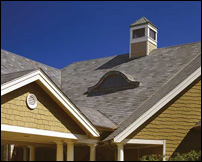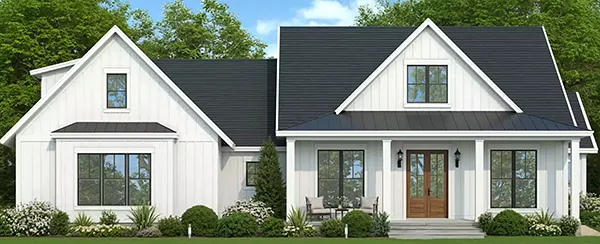How Green Are Your Roofing Options?
By Linda Kavanagh, The House Designers Contributing Writer
When it comes to roofing materials, the more common choices are asphalt shingles or shakes, concrete or cement tiles, clay or slate tiles, metal and in some areas solar roof shingles are becoming popular. Almost all of these roofing products have some "green" qualities. What you need to decide is how green you want your roof to be and how much money you want to spend on your new roof.
Asphalt shingles are one of the least-green roofing choices because of their short lifespan, toxic composition and the fact that they can't be recycled. Because the base underneath is black, even light-colored composition shingles offer poor heat reflectance compared to other light-colored materials. The main reason for their popularity is that they are the cheapest roofing option.
50-year composition asphalt shingles or shakes share the same environmental disadvantages as 5-year asphalt shingles, except that they have the advantage of being on your roof longer.
Recycled synthetic shingles are made from plastic or rubber, mixed with wood and are shaped to mimic wood shakes. They are much lighter than most roofing options, made from waste materials, UV-resistant, fire-resistant and durable. Many can last up to 50-years, however they cannot be easily recycled because of their content.
Cedar shakes are biodegradable and beautiful but they make a poor choice for a roofing material because they are flammable and need to replaced frequently.
Concrete or cement tile are highly durable, and fire and insect proof. Their biggest drawback is they are one of the heaviest roofs and require special structuring and are costly to ship.
Fiber-cement composite tile is composed of concrete, clay, and wood fiber. This mixture is durable and fireproof and often formed to look like shakes. Fiber-cement tiles are not as heavy as regular concrete tiles so they don't need extra-heavy roof structures. While they don't perform well in northern climates, and you can't walk on them, they can be recycled, are non-leaching, and make good water-collection roofing systems.
Clay tiles are a very natural product, but because of their weight require additional roof framing. The benefits are they are non-combustible, extremely durable, non-leaching and make a good base for water collection. If a local source is available, clay tiles are definitely one of the greenest roofing choices.
Slate tile is another excellent sustainable roofing choice because it is quarried and split without using manufacturing practices associated with most tiles. It's durable, recyclable, non-leaching and because of its dark color it's a favorite choice for high temperature climates.
Metal roofing has a lot going for it in terms of sustainability, particularly because it contains a large portion of recycled material and can be recycled indefinitely. Steel, copper, and aluminum roofing are durable materials, fireproof, and lightweight, making them an especially good choice in fire prone areas and in earthquake zones where heavy roofs are a liability. The only real environmental debate surrounding metal roofing is the cleanliness of the rainwater.



.png)
.png)



